By Nick Reber, Danielle Clanaman – Adapted with permission.
What the Data Says About the Harm of Unnecessary Medical Tests
New data shows us that one of the largest drivers of bad health outcomes and ballooning healthcare costs is medical testing. Most people agree that getting an unnecessary surgery is bad, but believe that it is “better to be safe than sorry” when it comes to receiving additional medical tests. After all, most tests are minimally invasive and can help spot issues before they get worse. However, the data shows us that each year 70 million patients in the US receive a test that lowers their life expectancy, leading to 25,000 excess deaths and an additional $420B in healthcare costs.
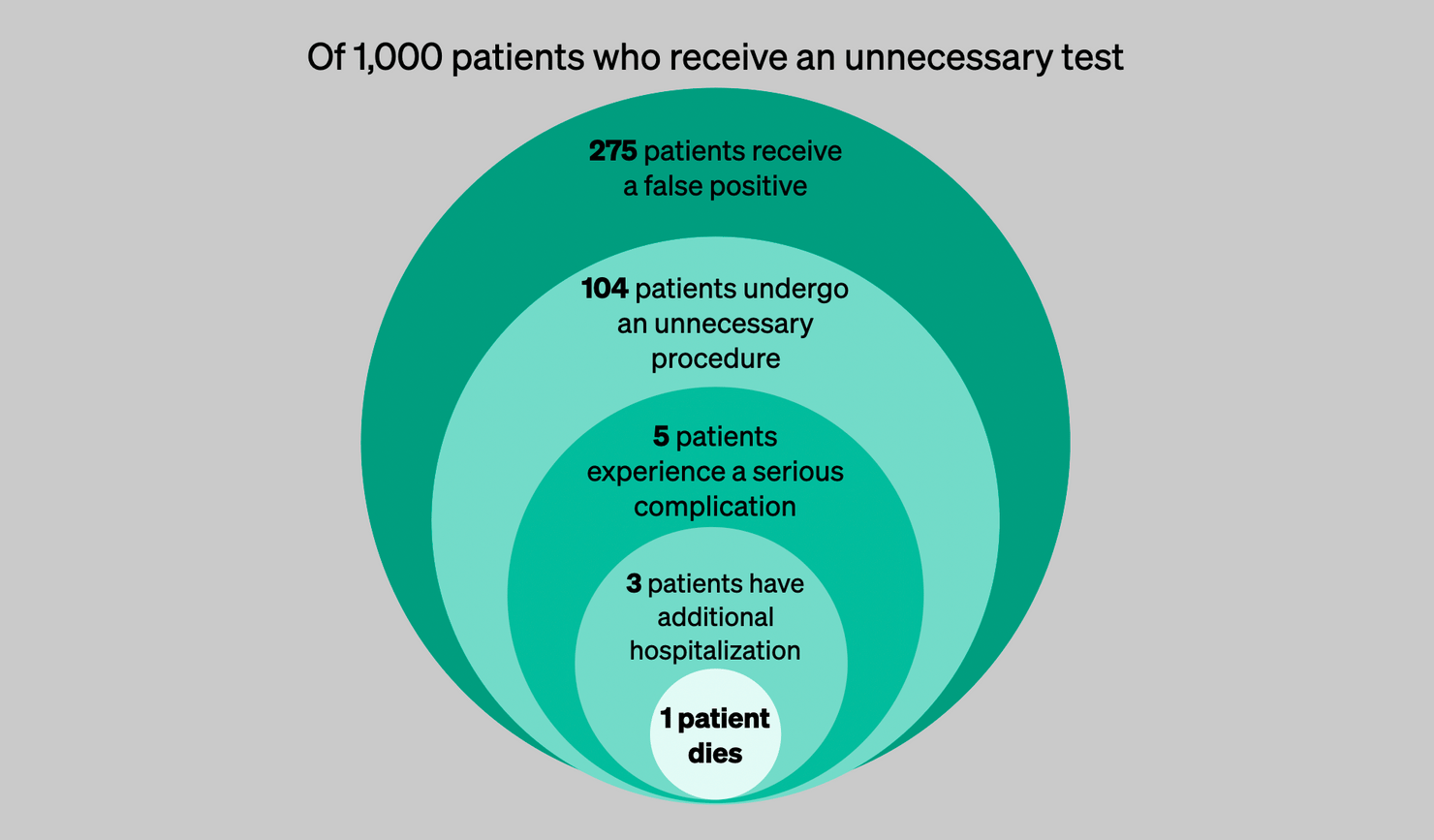
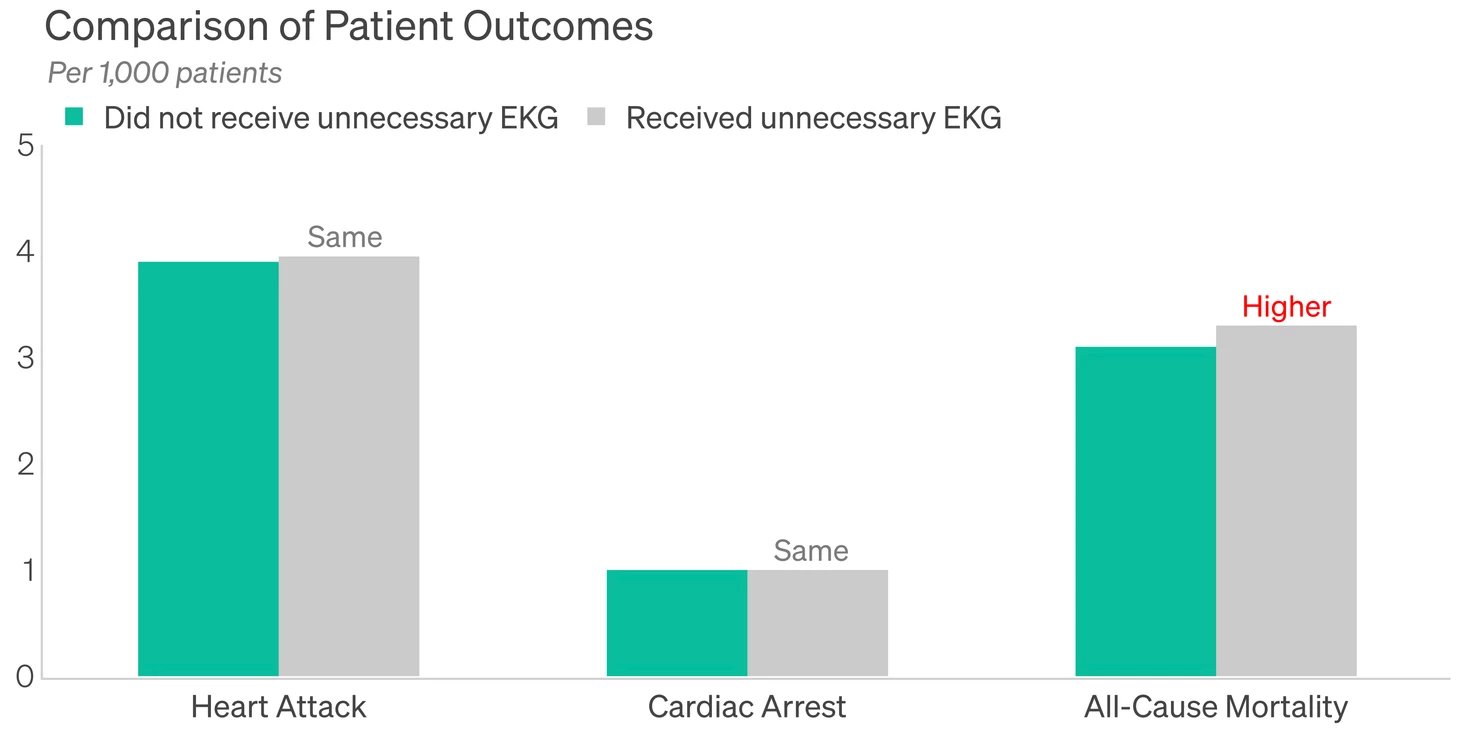
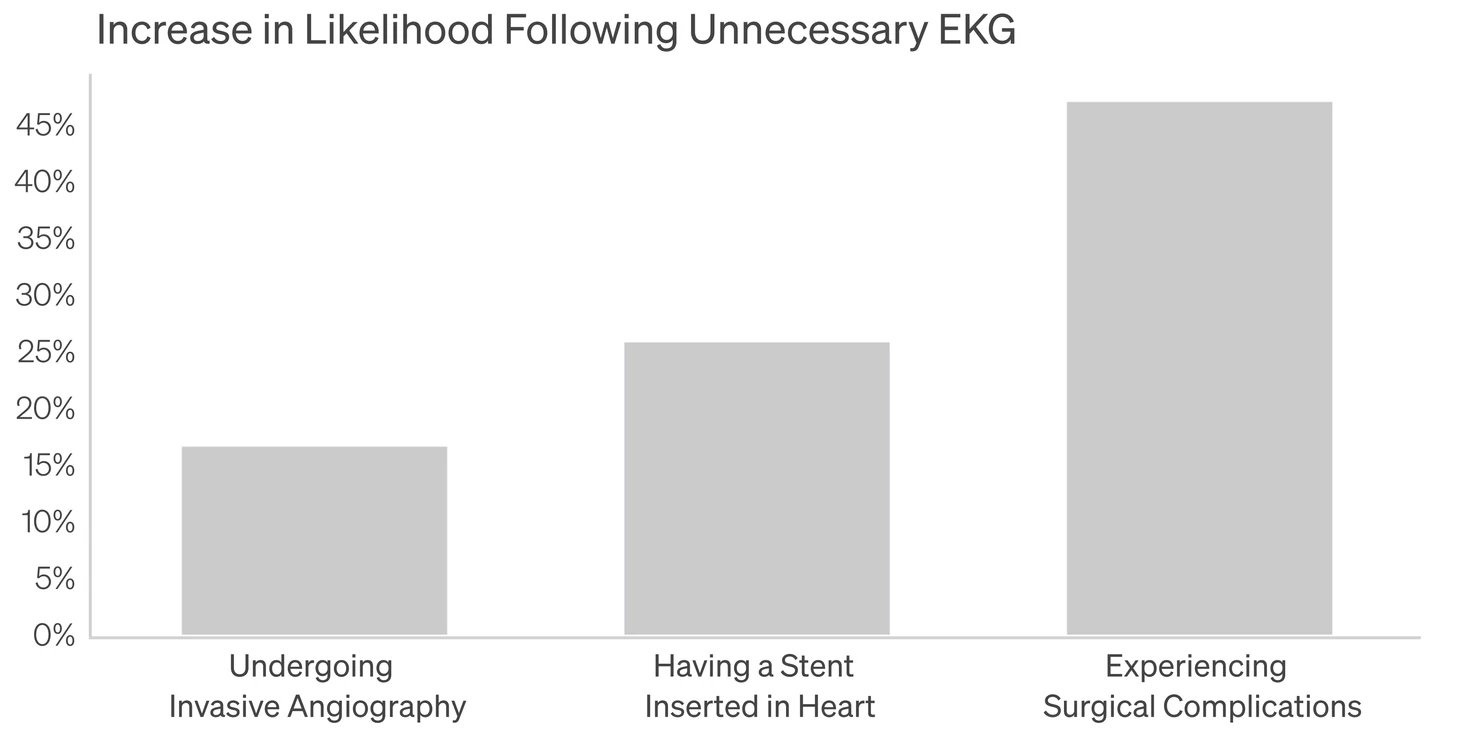
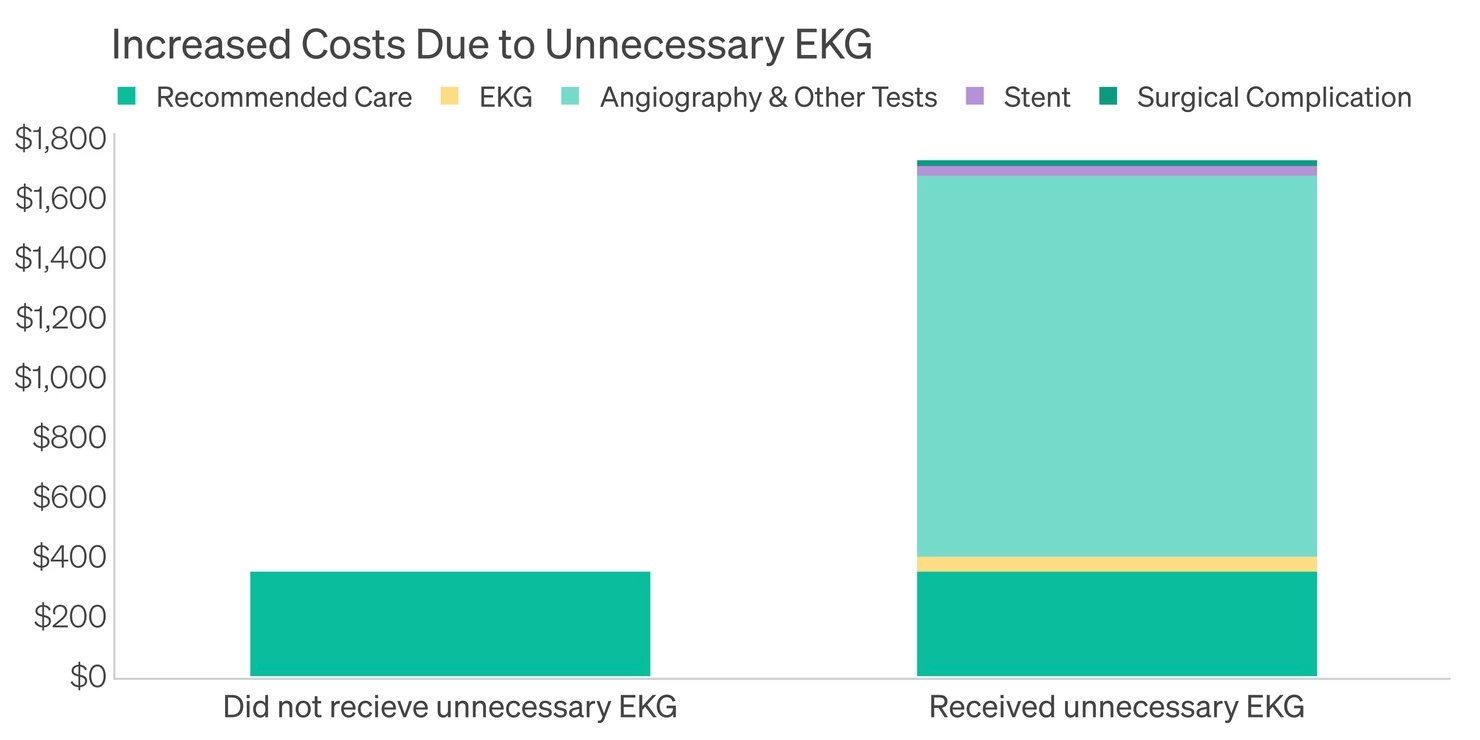
This unfavorable relationship between benefits and harms is not just true for unnecessary EKGs, but for many other tests as well. Below we discuss other examples of the impact of unnecessary testing.
Imaging for back pain: For back pain, imaging is not recommended until patients have undergone a course of physical therapy. In fact, our data shows us that patients who receive imaging before trying PT are less likely to experience a relief of symptoms, as imaging can distract from the true source of pain and lead to unnecessary interventions. Patients receiving early imaging are more than twice as likely to undergo back surgery and experience surgical complications, incurring an additional $4K in medical expenses.
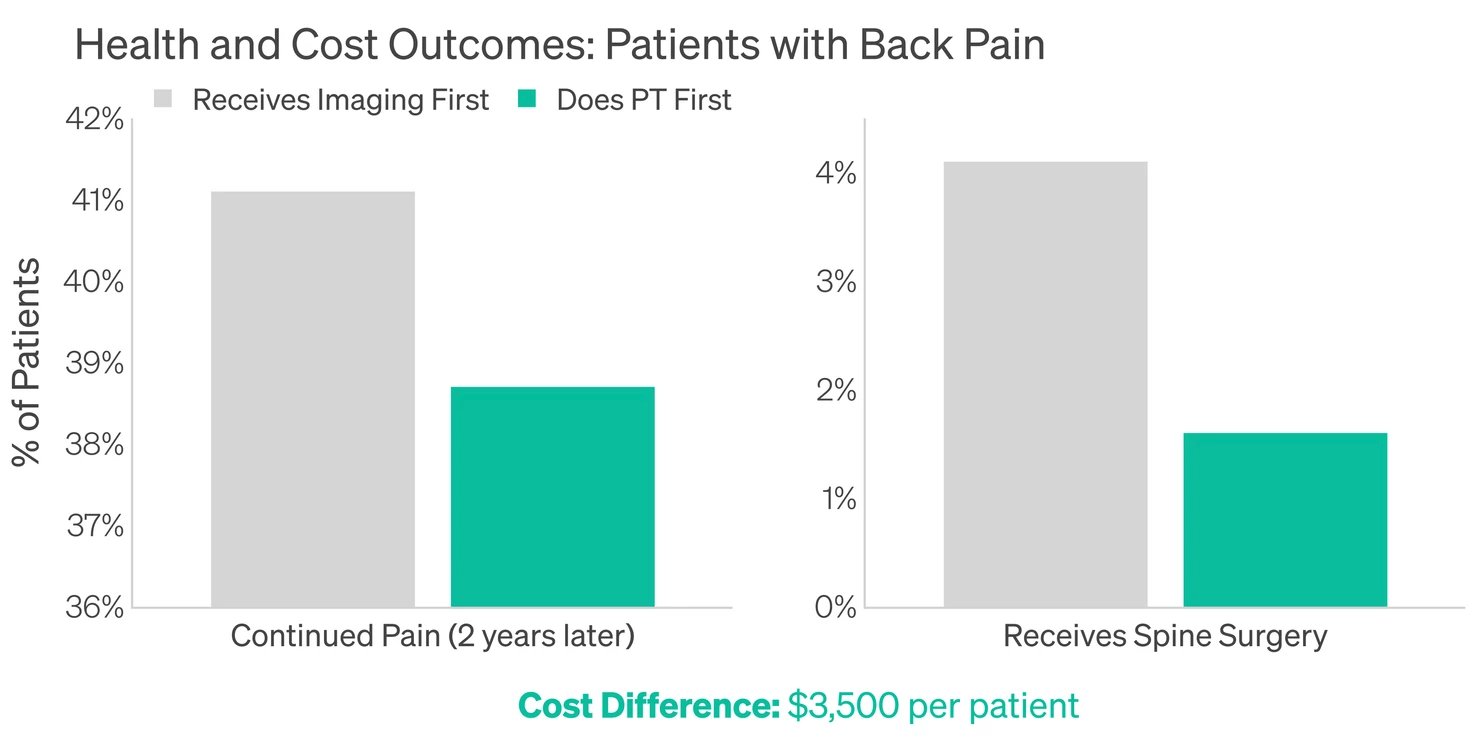
Routine prostate cancer screening: Routine prostate cancer screening (PSA) for men without a family history of or risk factors for prostate cancer leads to worse outcomes. Our data shows that, among this population, men who receive prostate cancer screening have no lower risk of getting late-stage prostate cancer, have nearly 3x the chance of having their prostate removed and experience an overall higher risk of death.
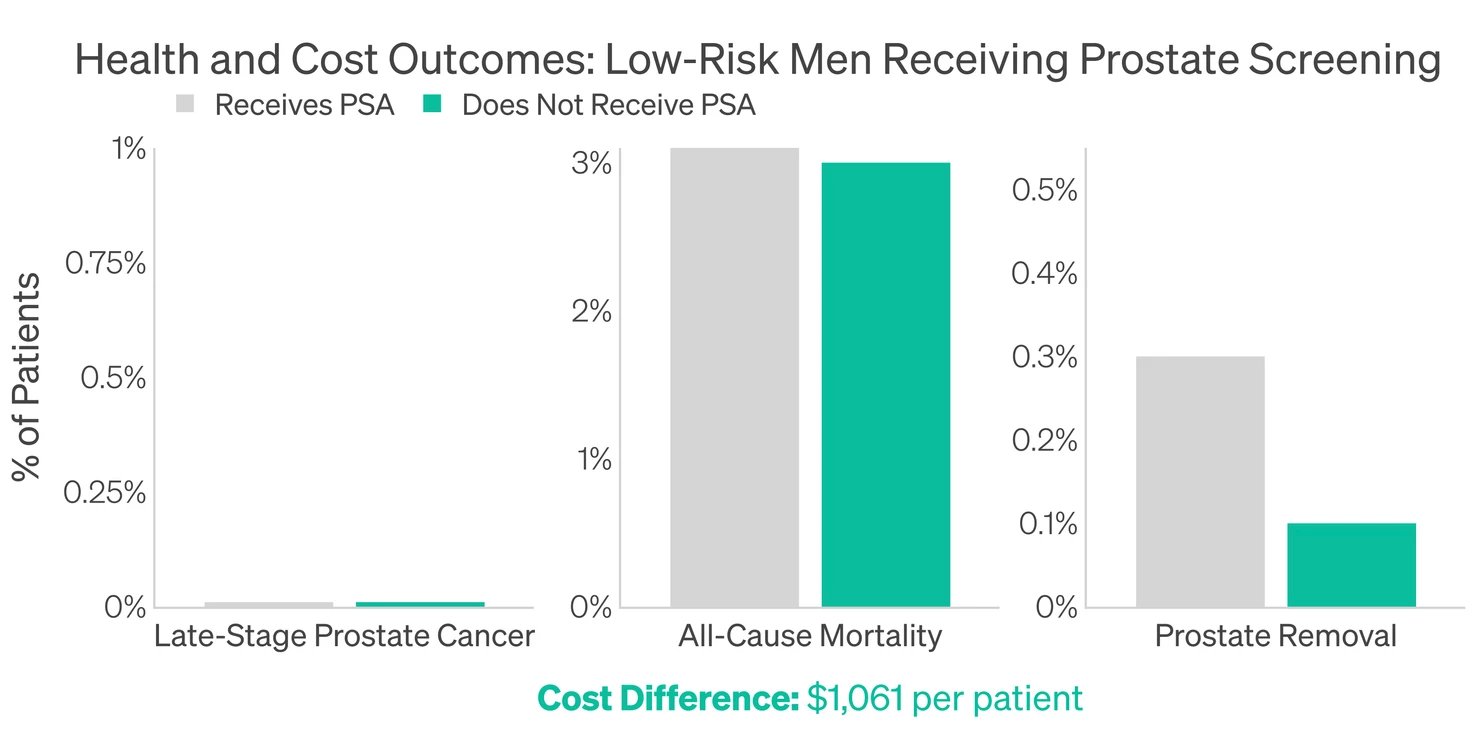
These common examples demonstrate the serious physical and financial harm that unnecessary tests cause. Given that most doctors are paid for the amount of tests they prescribe, receiving a test that is not recommended “just to be safe” happens incredibly frequently. This pattern is true even at the hospital systems with the best reputations for high-quality care. Thankfully, not all doctors perform medicine this way: in every community across the country, there are high-quality doctors that follow best practices when making decisions regarding tests and treatments. As the chart below shows, top performing doctors perform significantly fewer unnecessary tests, even relative to top hospital systems.
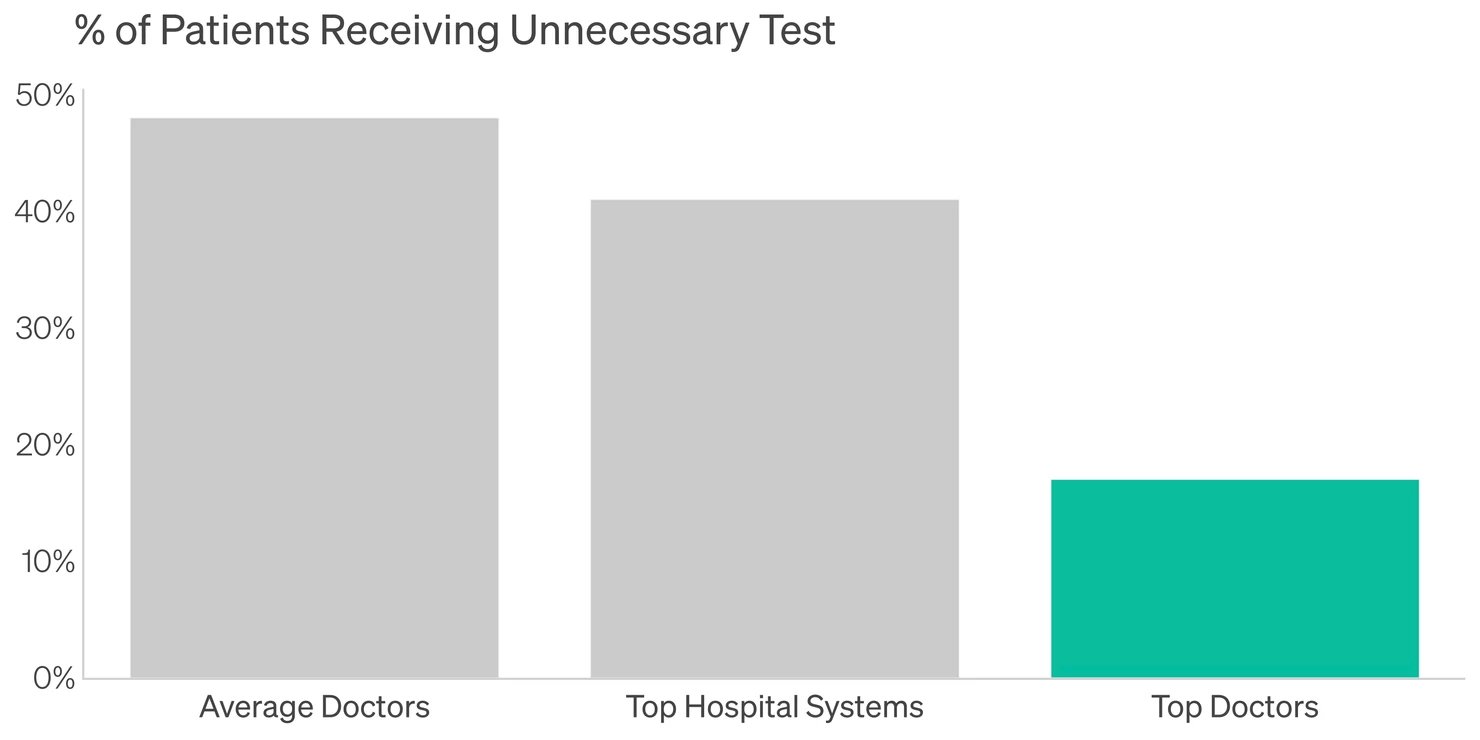
Ultimately, healthcare costs are reaching unsustainable levels for many employers, and patient outcomes are getting worse, not better. The above data on medical testing is only part of a broader picture that shows the growing cost of low quality and excessive medical care. We believe that the key to reducing costs and improving quality is shifting care towards the best performing doctors. If you are interested in learning more about how we can help you achieve this, feel free to contact us for a customized health outcomes and savings report.




Leave a Reply